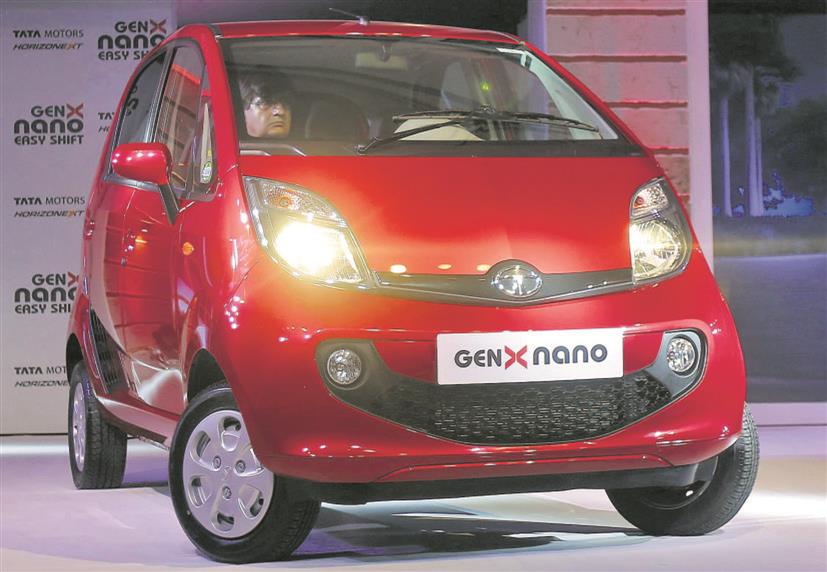H Kishie Singh
From the 1st vehicle on Indian soil to how the vehicle has affected the state socially, culturally and commercially, Gautam Sen’s hottest guide — unputdownable and a delight to read — is a cornucopia of vehicle know-how. Like how a Maharaja, miffed at the somewhat indifferent reception by a Rolls Royce salesman, acquired a few autos, got them shipped to India and then utilised them as garbage disposal vans!
The to start with chapter, ‘A Love Affair Begins’, traces the initially automobile that arrived to India. Maharaja Rajinder Singh of Patiala imported a French De Dion-Bouton in 1890. About 900 Rolls Royces arrived to India, generally for the rulers of princely states. The book has a heritage of the autos and their house owners.

Parsis began the car or truck fad in Bombay. The Bengali Brown Sahibs in Calcutta adopted. ‘The Affair Continues’ traces numerous cars and trucks that were imported, saved, deserted, discovered and restored.
In 1963, Rony Khan, at 16, started The Classic Automobile Club of Bombay. Pranlal Bhogilal was one member. Sen visited him and estimated about 200 vehicles in his collection. The Statesmen Classic & Typical Car Rally in Delhi impressed the movement in North India. Collectors Tarun Thakral and Diljeet Titus have established up museums. Other well recognised collectors are KC Anand, Kishore Gidwani, the Jaiswals, Sudhir Choudhrie, Ramchander Nath and Madan Mohan, who has about 450 autos.
An full chapter is devoted to athletics cars and trucks and convertibles. For some odd but gratifying purpose, these vehicles raise the heartbeat. Sen plays the doctor and attempts to make clear why.
Two crucial motorbikes arrived to India almost a century in the past. Jawa and Enfield are now building waves once again. The creator traces their origin to 1815 when George Townsend in Worcestershire, United kingdom, was manufacturing sewing equipment. From that to rifles, the Lee-Enfield. This is where the slogan ‘Made Like a Gun’ originated. The phrase ‘Bullet’ was a organic toddler!
The Jawa came from Czechoslovakia in 1929. It has resurfaced a short while ago and is an international brand name nowadays.
There is a total chapter ‘Make in India’ and an additional ‘A Automobile for the People’. The very first endeavor to make a auto in the nation was in 1902 by John Eco-friendly, an Englishman in Madras. It was not a thriving venture. There were others, the most significant effort being Maruti by Sanjay Gandhi. The challenge was a non-starter. Sanjay died in an air crash. Maruti was obtained by the authorities. Following a great deal looking for a joint undertaking, Suzuki was chosen. A great success story!
Tata launched Indica, Daewoo the Matiz, Hyundai the Santro. Hyundai turned the second most significant auto manufacturer following Maruti. Along arrived Nano from Tata, the most inexpensive priced motor vehicle in the globe. Introduced in 2008 at Automobile Expo, it took the entire world by storm. Alas, the Nano experienced also several teething complications. A good endeavor, but not a achievements story!
The closing chapter, ‘The Art of The Automobile’, is really interesting. The 1st sketches of the vehicle day back to Leonardo da Vinci (1452-1519). The plan was usually there, it gelled generations later! Emile Levassor and Rene Panhard, both equally French, and Karl Benz and Gottlieb Daimler from Germany produced the very first functioning vehicles.
Before long ample, cars and trucks became an item of fascination and glorification. Henri de Toulouse-Lautrec, the French artist, developed a lithograph, ‘The Automobilist’, in 1896.
Paintings and sculptures flourished. Cameras had been invented. Pictures captured the thrills and spills of motorsports. Cars and trucks were photographed in unique spots.
In India, the Shekhawati Havelis, which experienced historically demonstrated persons in ‘howdhas’ on elephants, in horse carriages and in trains, commenced to include autos.
Paintings and photos naturally led to the motion pictures. The to start with Indian movie to aspect a car or truck was ‘Ajantrik’, indicating the ‘Unmechanical’, by Ritwik Ghatak. Yet another hit film was ‘Chalti ka Naam Gaadi’. A outstanding instance of endorsing a item was the movie ‘Bobby’. No total of promoting could have performed what this movie did for the Rajdoot GTS 175.
Hollywood produced whole use of the American muscle automobiles. Bullitt, Vanishing Place, Grand Prix all exhibit what the vehicles are for and what each car or truck owner many years for — pace!
An pleasurable, insightful, enjoyable ebook, a delight to go through. Go and get two copies, a single for your self, a single to reward to a excellent pal!
